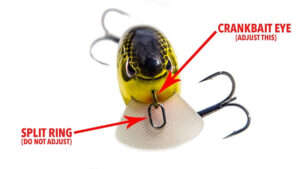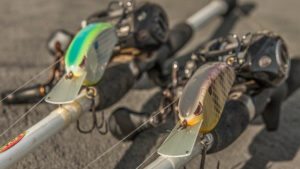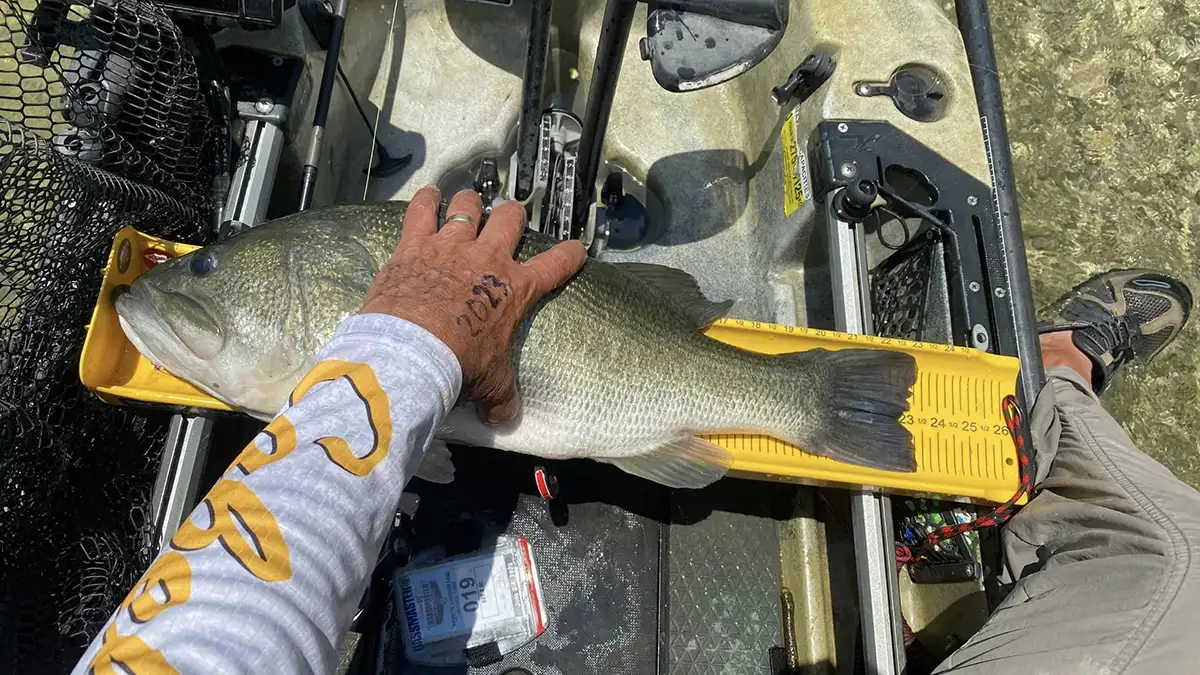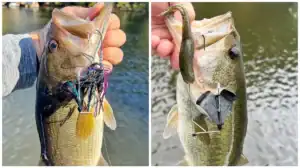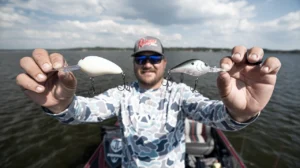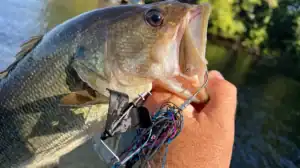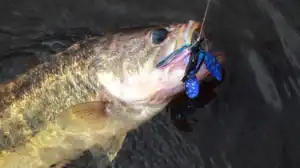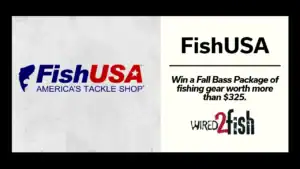Whether you’re trying to straighten its trajectory after a few bad casts or alter its path to “steer” it underneath docks and other overhanging cover, knowing how to tune a crankbait will certainly result in more fish catches.
Tuning a crankbait back to its center line
If your favorite crankbait isn’t tracking straight anymore, don’t throw it away. This is totally normal. After lots of collisions with hard cover, most crankbaits will need a little tuning.
When your crankbait is running to your right throughout the retrieve—towards your right shoulder, for example—you’ll need to slightly adjust its eye to your left with the crankbait facing you. With a pair of needle-nose pliers, pinch the eye of the lure (not the split ring) and slightly bend it to your left. This should be done in small increments to avoid damaging the eye. After each adjustment, make a short “test cast” to determine how much more adjusting is necessary.
This will take a few casts and adjustments to return it to perfectly return it to its center line.
When your crankbait is running to your left throughout the retrieve—towards your left shoulder—you’ll need to slightly adjust its eye to your right with the crankbait facing you. Repeat the above steps with the needle-nose pliers and your crankbait will be tracking straight in no time.
Tuning your crankbait to steer it underneath overhanging cover
This is an excellent technique with which I’ve had a lot of success. In dirty water, big bass will get as close to a piece of hard cover as they possibly can. Because their strike zone dramatically shrinks in these conditions, skirting the outside edges of this cover is often not enough to elicit a strike.
When you purposely tune your crankbait to run to one side, however, this allows you to make parallel casts to the cover and put your lure right in front of the bass. Essentially, you’re purely searching for a reaction bite.
If you’re approaching a piece of hard cover—boat docks, laydowns, etc.— on your boat’s port side, try tuning your crankbait to the right.
If you’re approaching a piece of hard cover—boat docks, laydowns, etc.— on your boat’s starboard side, try tuning your crankbait to the left.
Click here to watch our crankbait tuning video
This will get the crankbait in-between the dock posts or branches in order to fool unsuspecting bass. Big bass are smart; they see all kinds of jigs and worms in thick cover throughout the year. But if you can put a well-tuned crankbait a few feet inside of that same cover, you’ll enjoy some of the most vicious strikes of the year.
I prefer to keep a handful of crankbaits tuned for both situations I mentioned. I’ll draw a very small dot with a permanent market on one side of the lure’s bill. If the crankbait is tuned to the right, the dot will be on the right side of the bill. If the crankbait is tuned to the left, the dot will be on the right side of the bill.
For this reason, I’ll have several similar-looking crankbaits rigged when I’m on a solid bite. Regardless of the necessary angles, my boat positioning or the location of my target cover, I have a crankbait that’s ready for the job.

